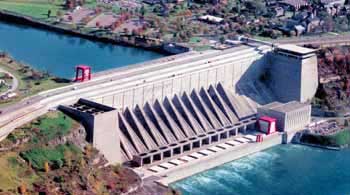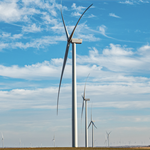Income From Hydroelectric Power
Energy Disrupter
Spread the love
by Debra Fiakas CFA![niagara1[1].jpg](https://www.altenergystocks.com/wp-content/uploads/2017/08/niagara1_1_.jpg) Are you an investor hungry for current income? Is there a green line of global warming fear running through your investment selections? I have stock that fulfills both requirements. Brookfield Renewable Energy Partners (BEP: NYSE) is a renewable power producer with assets in Canada, the U.S. and Brazil. Brookfield generates over 5,900 megawatts of power each year from plants running on river water, wind or natural gas. Another 2,000 megawatts is apparently under development in Canada and Brazil.
Are you an investor hungry for current income? Is there a green line of global warming fear running through your investment selections? I have stock that fulfills both requirements. Brookfield Renewable Energy Partners (BEP: NYSE) is a renewable power producer with assets in Canada, the U.S. and Brazil. Brookfield generates over 5,900 megawatts of power each year from plants running on river water, wind or natural gas. Another 2,000 megawatts is apparently under development in Canada and Brazil.
What Brookfield does best is hydroelectric production. The company claims over 170 hydropower stations across the U.S., Canada and Brazil, diverting river water through turbines to generate very clean energy. Hydroelectric power generates less than 5% of the greenhouse gas emissions from coal-fired power plants, which can spew out as many as 900 tons to 1,000 tons of carbon dioxide per gigawatt hours of electricity produced. More details can be found from the Global Reporting Initiative provides information on the greenhouse gas emissions from various power sources.
If Brookfield’s hydroelectric power is green enough for you, then let’s move on the company’s generation of income for its shareholders. Since Brookfield shares began trading in October 2001, the stock price has climbed steadily to a level 230% higher than its debut price.
Brookfield started paying a quarterly dividend in December 2011. Management has pledged to distribute between 60% and 70% of funds from operations as well as to grow distributions by 3% to 5% each year. The current quarter dividend is $0.3625 per share. At the current price that represents a very attractive forward dividend yield of 5.1%. Does Brookfield have the cash to fulfill its dividend pledge?
Brookfield has reported net losses in two of the last three years. Yet, investors looking only at net income will not get the full answer to the dividend policy question. Indeed, the company consistently generates significant positive cash flows. In the last twelve months Brookfield converted $1.33 billion in revenue to $395.0 million in cash from operations. Brookfield’s sales-to-cash conversion ratio of 29.7% stands out among power producers. What is more Brookfield has $227 million in cash on its balance sheet. That is a good nest egg, but we do note the company has $7.2 billion in debt on the balance sheet as well.
Despite the debt, Brookfield is an attractive holding for income-seeking investors. The icing on the cake is a beta measure of risk at a tepid 0.40. If the stock as it trades on the Toronto (BEP.UN: TSX) or New York exchanges (BEP: NYSE) appears a overpriced, there is several series of preferred stock that also trade on the Toronto exchange.
Debra Fiakas is the Managing Director of Crystal Equity Research, an alternative research resource on small capitalization companies in selected industries.
Neither the author of the Small Cap Strategist web log, Crystal Equity Research nor its affiliates have a beneficial interest in the companies mentioned herein.















